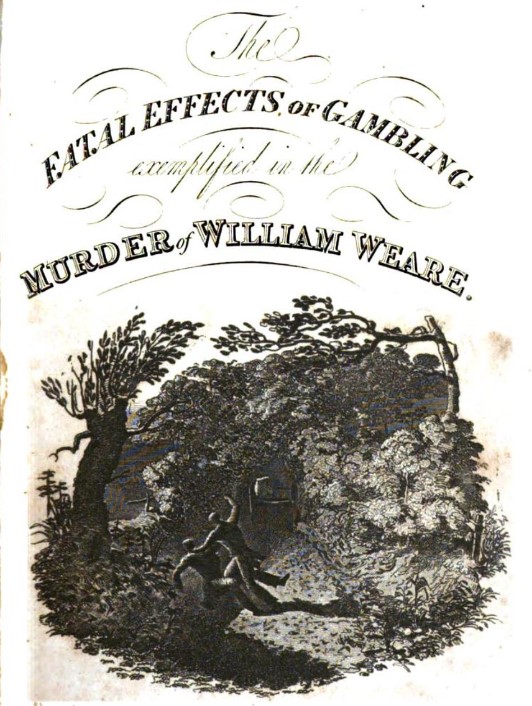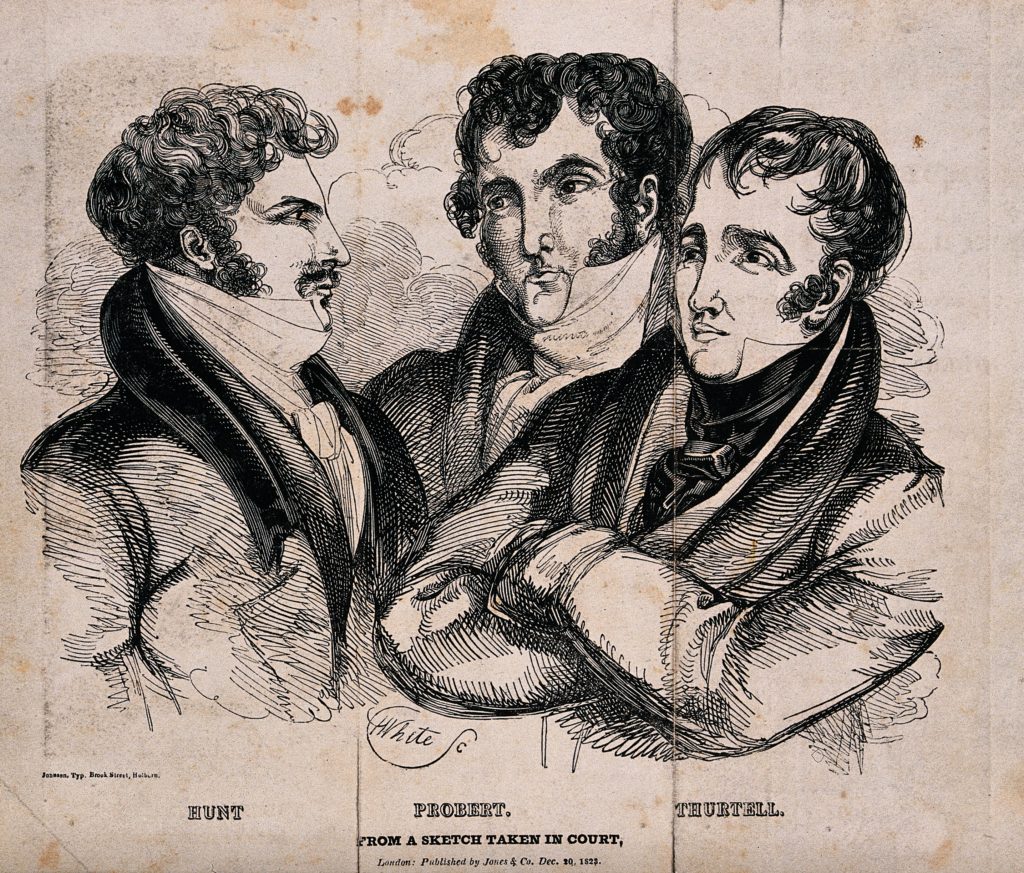
Radlett in Hertfordshire would come into the spotlight in 1823 for the salacious murder of Mr. Weare.
Mr. Weare was a solicitor and gambler who lived in the Lyon’s Inn. He was invited to join sports promoter, amateur boxer, and former Royal Marine officer John Thurtell, whose father was the mayor of Norwich, and several friends for a weekend of gambling at William Probert, a former convict’s, cottage.
Thurtell was already in debt to Weare in the amount of £300 (roughly £20,000 in today’s currency), but had decided Thurtell had won by cheating and hatched a plan to murder him rather than paying his debt.
The Fatal Effects of Gambling Exemplified in the Murder of Wm. Weare, and the Trial and Fate of John Thurtell, the Murderer, and His Accomplices With Biographical Sketches of the Parties Concerned … To which is Added, the Gambler’s Scourge; a Complete Exposé of the Whole System of Gambling in the Metropolis; with Memoirs and Anecdotes of Notorious Blacklegs (1824)
From the above booklet, here is a narrative of the crime:
Weare had been shot in the face with a flintlock muff pistol, but managed to escape the gig. He was badly injured, and Thurtell was able to easily catch him and then dispatch him first with a knife to the throat and then with severe blows to his head with the pistol. Weare’s body was then dumped in a pond near the cottage. The body was moved, after fear of discovery, to another pond in Elstree.
All three murders were indicted. Thurtell was hanged on January 9, 1824. Hunt was transported to Botany Bay, and later gained his freedom and became a respectable police constable in Australia. Probert, who was given a deal to testify against the others, had to resort to crime to support himself after he became a social outcast and was hanged a year later at Newgate for stealing a horse from a relative.

V0041660 The portraits of Hunt, Probert and Thurtell. Engraving by Wh
Credit: Wellcome Library, London. Wellcome Images
images@wellcome.ac.uk
http://wellcomeimages.org
The portraits of Hunt, Probert and Thurtell. Engraving by White.
1823 after: WhitePublished: 20 December 1823
Copyrighted work available under Creative Commons Attribution only licence CC BY 4.0 http://creativecommons.org/licenses/by/4.0/
The crime was sensationalized in part because it highlighted a turning tide in Society against gambling and vice. Many scanned copies of the booklets about the crime are available on the web today, showcasing the public interest in the case.











